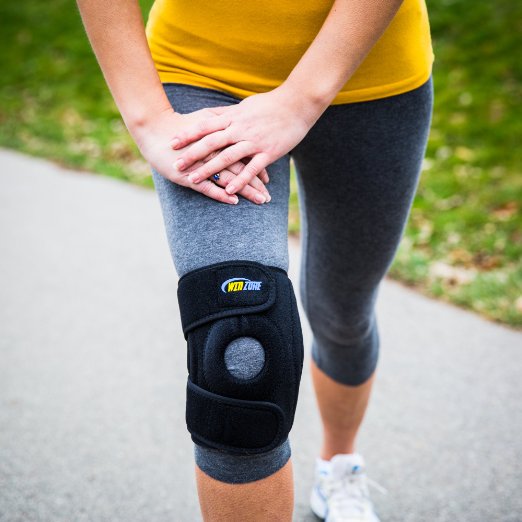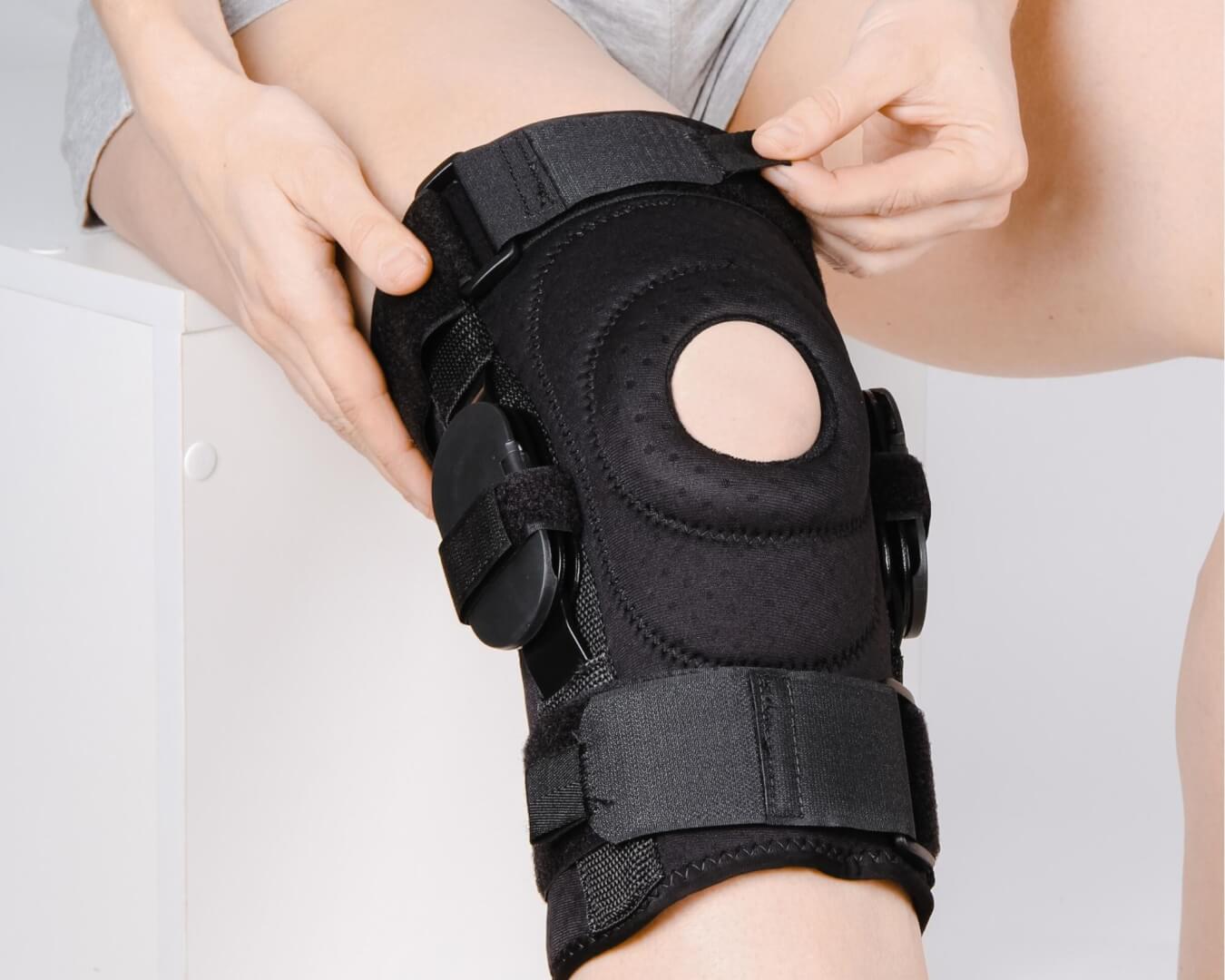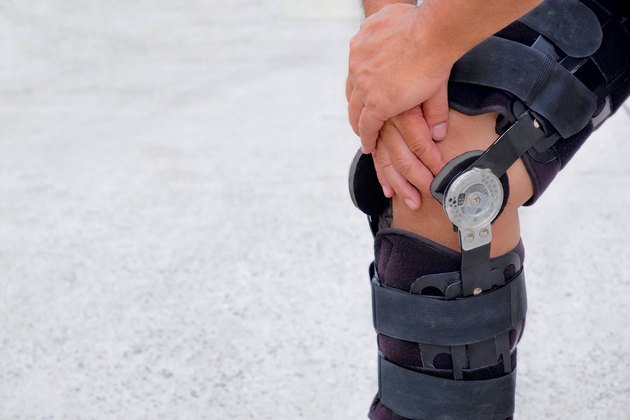When to Wear a Knee Brace
Knee braces serve various purposes in supporting and protecting the knee joint. They are often recommended for individuals recovering from injuries, surgeries, or managing chronic knee conditions. In post-injury recovery, knee braces can help stabilize the joint, prevent further damage, and provide pain relief. During knee surgery rehabilitation, a healthcare professional may suggest wearing a brace to restrict movement and ensure proper alignment while the knee heals.
Knee osteoarthritis, a common chronic condition, can also benefit from the use of knee braces. These braces can help distribute weight away from the affected area, reducing pain and improving mobility. Depending on the severity and location of the osteoarthritis, a healthcare professional may recommend different types of braces and wearing durations.
Typically, knee braces are recommended to be worn for short periods, such as a few hours a day, during the initial stages of recovery or management. As the knee joint becomes stronger and more stable, the wearing duration may be gradually reduced. However, individual needs and conditions may vary, and it’s essential to follow the healthcare professional’s advice and recommendations for how long to wear a knee brace.
Types of Knee Braces
Knee braces come in various types, each designed for specific purposes and conditions. Understanding these types can help you make informed decisions about how long to wear a knee brace and which one is most suitable for your needs.
Functional Knee Braces
Functional knee braces are designed to provide support and stability for individuals with existing knee injuries or those who have undergone knee surgeries. These braces typically limit the knee’s movement and help prevent further damage. Depending on the severity of the injury and the healing process, functional knee braces can be worn for several weeks to a few months, as recommended by a healthcare professional.
Rehabilitative Knee Braces
Rehabilitative knee braces, also known as hinged knee braces, are used during the early stages of knee injury recovery or post-surgery. They restrict movement and protect the knee joint while it heals. Rehabilitative braces are usually worn for a few weeks to a couple of months, depending on the individual’s progress and the healthcare professional’s advice.
Unloader Knee Braces
Unloader knee braces are primarily used for individuals with knee osteoarthritis. These braces help redistribute weight and pressure away from the affected area, reducing pain and improving mobility. Depending on the severity and location of the osteoarthritis, unloader braces can be worn for extended periods, even indefinitely, with the guidance of a healthcare professional.
Prophylactic Knee Braces
Prophylactic knee braces are designed to protect the knee joint from injuries, especially in high-impact sports or activities. They are typically worn during athletic events or practices and removed when not participating in these activities. Prophylactic braces are not intended for long-term use and should be used only under the guidance of a healthcare professional or coach.
How Long Can You Wear a Knee Brace: General Guidelines
While individual needs and conditions may vary, some general guidelines can help you determine how long to wear a knee brace. These recommendations are based on the type of knee brace and the user’s specific situation.
Functional and Rehabilitative Knee Braces
For functional and rehabilitative knee braces, the wearing duration typically ranges from a few weeks to a few months. During the initial stages of recovery, these braces may be worn almost continuously, with short breaks for hygiene and skin care. As the knee joint becomes stronger and more stable, the wearing duration can be gradually reduced, often transitioning to wearing the brace only during high-risk activities or when experiencing discomfort.
Unloader Knee Braces
Unloader knee braces can be worn for extended periods, even indefinitely, depending on the severity and location of the knee osteoarthritis. However, it’s essential to monitor the knee’s progress and adjust the wearing duration accordingly. Regular follow-ups with a healthcare professional can help ensure the brace remains effective and necessary.
Prophylactic Knee Braces
Prophylactic knee braces are designed for short-term use during high-impact sports or activities. They should be removed when not participating in these activities and should not be worn for extended periods without the guidance of a healthcare professional or coach.
Regardless of the type of knee brace, it’s crucial to follow the healthcare professional’s advice and recommendations for wearing duration. Regularly monitoring the knee’s progress and adjusting the wearing duration as needed can help ensure the brace remains effective and prevent potential complications.
Potential Risks and Complications of Overuse
Wearing a knee brace for extended periods can lead to several potential risks and complications. Being aware of these issues can help you make informed decisions about how long to wear a knee brace and ensure its continued effectiveness.
Skin Irritation
Prolonged use of a knee brace can cause skin irritation, especially if the brace doesn’t fit properly or if the skin isn’t cleaned and dried regularly. Skin irritation can lead to discomfort, rashes, or even infections. To prevent skin irritation, ensure the knee brace fits correctly, and clean and dry the skin regularly. If skin irritation persists, consult a healthcare professional for advice.
Muscle Atrophy
Wearing a knee brace for an extended period may lead to muscle atrophy, as the brace can limit the knee joint’s movement and reduce muscle activation. Muscle atrophy can result in reduced strength, stability, and mobility. To prevent muscle atrophy, gradually reduce the wearing duration of the knee brace as the knee joint becomes stronger and more stable. Incorporating exercises that target the knee muscles can also help maintain muscle mass and function.
Dependency on the Brace
Overreliance on a knee brace can lead to dependency, where the individual feels unable to perform activities without the brace. This dependency can hinder the knee joint’s natural healing process and limit the development of strength and stability. To avoid dependency, use the knee brace only when necessary and gradually reduce its wearing duration as the knee joint improves. Combining the brace with other treatment methods, such as physical therapy and exercise, can help promote long-term knee health and functionality.
Monitoring the knee’s progress and adjusting the wearing duration accordingly is crucial for preventing potential risks and complications associated with overuse. Regular follow-ups with a healthcare professional can help ensure the knee brace remains effective and necessary.
Signs That You Need to Adjust or Stop Wearing a Knee Brace
While wearing a knee brace can provide numerous benefits, it’s essential to be aware of signs that indicate it’s time to adjust or stop using the brace. Consult a healthcare professional if you experience any of the following issues:
Increased Pain or Swelling
If you notice an increase in pain or swelling around the knee joint while wearing a knee brace, it may be a sign that the brace is not providing the necessary support or that it’s aggravating the condition. A healthcare professional can evaluate the situation and recommend adjustments or alternative treatment methods.
Reduced Mobility
A knee brace that is too tight or improperly fitted can limit the knee’s range of motion, leading to reduced mobility. If you find it challenging to bend or straighten your knee, consult a healthcare professional for advice on adjusting the brace or exploring alternative treatment options.
Persistent Discomfort or Skin Irritation
Prolonged use of a knee brace can cause discomfort or skin irritation, especially if the brace doesn’t fit correctly. If you experience persistent discomfort or skin irritation, consult a healthcare professional for guidance on adjusting the brace or exploring alternative treatment methods.
Dependency on the Brace
Overreliance on a knee brace can hinder the knee joint’s natural healing process and limit the development of strength and stability. If you feel unable to perform activities without the brace, consult a healthcare professional for advice on gradually reducing its wearing duration and incorporating other treatment methods, such as physical therapy and exercise, to promote long-term knee health and functionality.
Regularly monitoring the knee’s progress and consulting a healthcare professional when necessary can help ensure the safe and effective use of a knee brace.
Alternatives to Knee Braces
While knee braces can provide valuable support and protection for the knee joint, they may not always be the best or only solution. Various alternative methods can help support and protect the knee joint, offering benefits and limitations compared to knee braces. Here are some alternatives to consider:
Physical Therapy
Physical therapy can help strengthen the muscles surrounding the knee joint, improve flexibility, and enhance overall knee functionality. A physical therapist can design a customized exercise program tailored to your specific needs and condition. Physical therapy can be an effective alternative to knee braces or a complementary treatment method to maximize the benefits of wearing a knee brace.
Exercise and Strength Training
Regular exercise and strength training can help improve knee stability, reduce pain, and prevent future injuries. Focus on exercises that target the muscles surrounding the knee joint, such as quadriceps, hamstrings, and calf muscles. Consult a fitness professional or physical therapist to ensure the exercises are safe and suitable for your condition.
Lifestyle Modifications
Adopting lifestyle modifications can help alleviate knee pain and improve knee health. Maintaining a healthy weight, practicing good posture, and avoiding high-impact activities can reduce the stress on the knee joint. Implementing ergonomic adjustments, such as using a supportive chair or adjusting your workspace, can also help protect the knee joint and prevent potential injuries.
Heat and Cold Therapy
Applying heat or cold to the knee joint can help alleviate pain and reduce inflammation. Heat can help relax muscles and improve blood flow, while cold can help numb the area and reduce swelling. Utilize heat or cold therapy as needed, but avoid applying extreme temperatures directly to the skin. Consult a healthcare professional for guidance on the appropriate duration and frequency of heat or cold therapy.
While alternative methods can provide benefits, it’s essential to consult a healthcare professional before deciding how long to wear a knee brace or if alternative methods are suitable for your specific condition. Individual needs and conditions may vary, and professional guidance is crucial for ensuring safety and effectiveness.
Making the Most of Your Knee Brace
Wearing a knee brace can provide numerous benefits, but it’s essential to ensure you’re using it correctly to maximize its effectiveness and prevent potential complications. Here are some tips and recommendations for making the most of your knee brace:
Proper Fitting and Adjustment
Ensure your knee brace fits properly and is adjusted correctly. An ill-fitted brace may not provide the necessary support or may even cause discomfort or pain. Consult the manufacturer’s instructions or a healthcare professional for guidance on fitting and adjusting your knee brace.
Maintenance and Cleaning
Regularly clean and maintain your knee brace to prevent skin irritation, odors, and deterioration of the brace material. Use mild soap and warm water to clean the brace, and allow it to air dry completely before using it again. Check the brace for any signs of wear or damage and replace it if necessary.
Wearing Schedule
Establish a wearing schedule based on your healthcare professional’s advice and recommendations. Gradually increase the wearing duration as your knee joint becomes stronger and more stable. Be mindful of potential risks and complications associated with overuse and adjust the wearing duration accordingly.
Combining with Other Treatment Methods
Combine your knee brace with other treatment methods, such as physical therapy, exercise, and lifestyle modifications, for optimal results. A comprehensive treatment plan can help improve knee functionality, reduce pain, and prevent future injuries.
By following these tips and recommendations, you can make the most of your knee brace and ensure its continued effectiveness in supporting and protecting your knee joint. Remember to consult a healthcare professional before making any decisions regarding how long to wear a knee brace, as individual needs and conditions may vary.
Consulting a Healthcare Professional
When it comes to determining how long you can wear a knee brace, individual needs and conditions may vary. A healthcare professional can provide personalized advice and recommendations based on your specific situation, ensuring safety and effectiveness. Here’s why consulting a healthcare professional is crucial:
Expert Assessment
A healthcare professional can assess your knee injury, condition, or surgical recovery, providing a clear understanding of the support and protection required. They can recommend the most suitable type of knee brace and the appropriate wearing duration based on your specific needs.
Monitoring Progress
A healthcare professional can monitor your knee’s progress and adjust the wearing duration and brace type as necessary. Regular follow-ups can help ensure that the knee brace remains effective and that any potential complications are addressed promptly.
Customized Treatment Plan
A healthcare professional can create a customized treatment plan that combines the use of a knee brace with other methods, such as physical therapy, exercise, and lifestyle modifications. This comprehensive approach can help improve knee functionality, reduce pain, and prevent future injuries.
Preventing Misuse or Overuse
Consulting a healthcare professional can help prevent misuse or overuse of a knee brace, reducing the risk of potential complications such as skin irritation, muscle atrophy, or dependency on the brace. They can provide guidance on proper fitting, adjustment, and maintenance, ensuring that you make the most of your knee brace.
In conclusion, consulting a healthcare professional is essential when deciding how long to wear a knee brace. Their expertise, guidance, and monitoring can help ensure the safe and effective use of a knee brace, providing the necessary support and protection for your knee joint. Remember that individual needs and conditions may vary, and professional guidance is crucial for ensuring safety and effectiveness.








